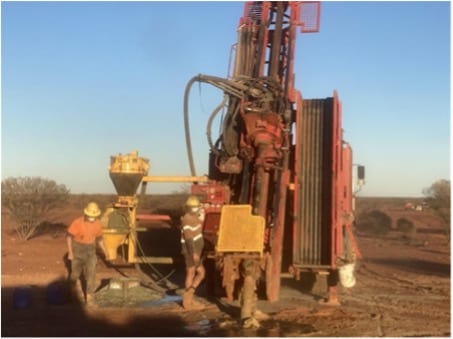60 Holes Planned For Approximately 4,000 To 5,000m Of Drilling
Great Boulder Resources (ASX: GBR) has kicked off a 60-hole air-core (AC) drilling programme testing four regional targets within the Side Well area of the Side Well Gold Project in Western Australia.
The programme will include the first holes along strike from Doray Minerals’ intersection of 3m @ 35.5g/t Au from 76m in MNAC0463 drilled in a reconnaissance AC programme completed in 2011.
Managing Director, Andrew Paterson, said other targets to be tested include areas highlighted during examination of the VTEM conductivity data, as well as two areas of pathfinder anomalism from soil sampling completed east of Mulga Bill during 2020. The programme is expected to take approximately three weeks.
“Having completed AC drilling on a number of Whiteheads targets last week we’re now back on the ground at Side Well. This is our fourth drilling program since the end of March,” Mr Paterson said.
“We are very keen to look at the geology at Matilda and see if we can extend mineralisation in the high-grade zone, as well as three other high priority untested targets in the region.
“The company also eagerly awaits the remaining results from the Mulga Bill RC program and the soil samples at Jones Well as we look to build a pipeline of prospects within the Side Well project.”
The current backlog of assays from Side Well includes 26 of the 29 RC holes drilled at Mulga Bill during April. Two of the first three holes assayed intersected significant gold mineralisation, including 6m @ 31.2g/t Aufrom 130m in hole 21MBRC002. These results are expected to be available in the next three to four weeks.
A soils programme consisting of 948 samples over the Jones Well area is also due to be assayed by the end of May. This area has not previously been explored.
The recent AC program at Whiteheads included 100 holes for 4,267m testing a number of targets along the Arsenal Trend including the Gunners prospect north of Blue Poles. Two other soil anomalies at Jubilee North and Hillsborough were also drilled for the first time. Initial assays from this program are expected by the end of June.












